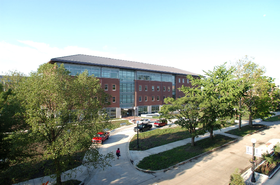The Texas Advanced Computing Center (TACC) at the University of Texas in Austin has received a new supercomputer.
The Stampede3, based on Dell servers and Intel CPUs and GPUs, will bring an additional 4 petaflops of computing capability to TACC, making the Stampede combined capability reach almost 10 petaflops.
The high-performance computing (HPC) system is expected to be operational by early 2024.
The HPC has been made possible by a $10 million award from the US National Science Foundation (NSF). Stampede3 will be accessible to the US open science community via the NSF’s ACCESS supercomputing ecosystem.
Stampede3 will combine with Stampede2. The new cluster will be comprised of 560 Sapphire Rapids Intel Xeon CPU Max Series processors with a combined 63,000 cores, an AI and GPU subsystem including 10 Dell PowerEdge XE9640 servers, and 40 Intel Data Center GPU Max Series processors.
It will also feature a reintegration of 224 3rd generation Intel Xeon Scalable processor nodes that were added to Stampede2 in 2021 and more than 1,000 second-generation Intel Xeon Scalable processors also from Stampede2.
“Stampede3 will provide the user community access to CPU nodes equipped with high-bandwidth memory for accelerated application performance,” said Katie Antypas, office director for NSF’s Office of Advanced Cyberinfrastructure. “In addition, the transition from Stampede2 to Stampede3 will be transparent to users easing the shift to a new system. I’m confident it will be a popular platform for the broad science and engineering community.”
The new system will run with high bandwidth memory only. Dan Stanzione, executive director of TACC, told HPCWire: “These [Intel nodes] are the top skew with 56 cores per socket, so 112 cores per node systems. To really leverage that part, and in our opinion for HPC, you don’t put Dual In-line Memory Modules (DIMMs) in because that slows High Bandwidth Memory (HBM) down.
“The systems have 128G of pure HBM and the thinking is, if you need more per core than and you can’t scale out to more cores to reduce your memory footprint, then that’s what we still have those Ice Lake nodes for. They have 256GB of memory and fewer cores, so they offer 3GB per core.”
According to Stanzione, the decision to stick with HBM has seen between a 60 and 70 percent improvement for their most common codes.
Stampede3 is the third iteration of the Stampede supercomputer since the original was built in 2012. Stampede2 came to fruition in 2017 while the first Stampede was decommissioned in 2019, giving a chunk of the cluster to Stampede2 for repurposing. Since Stampede2’s deployment, more than 11,000 users working on over 3,000 funded projects have run more than 11 million simulations and data analysis jobs on the system.
Parts of Stampede2 have already been shut down to enable the new installation, but according to Stanzione, “the idea is that there is always a Stampede running at some scale for the users. The plan is to never cut user’s access.”
The TACC is also home to the Frontera supercomputer, Stallion, and the Lonestar6 cluster which was deployed in 2021.







